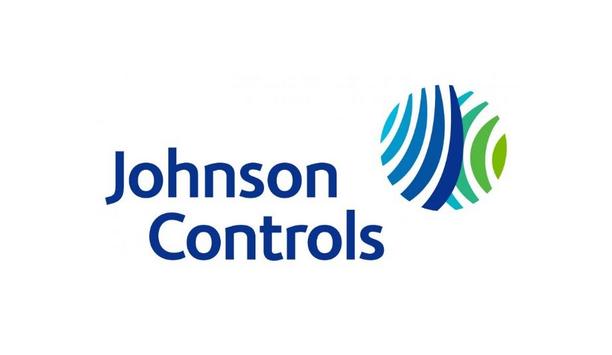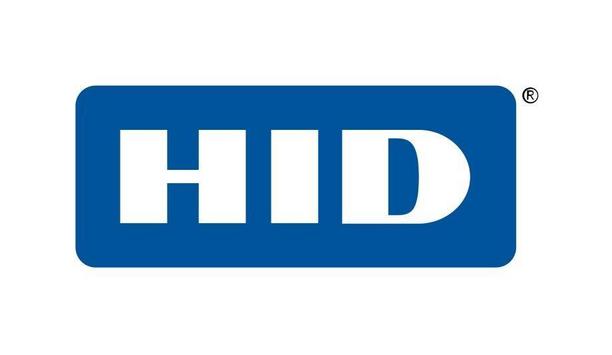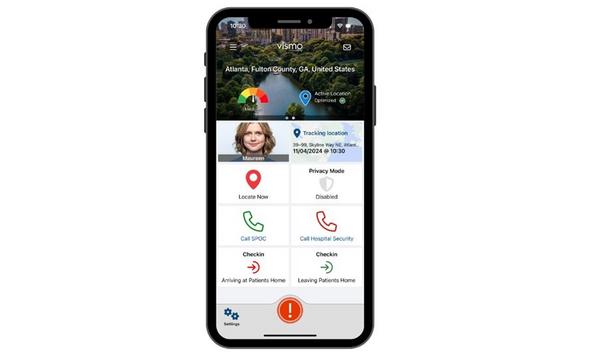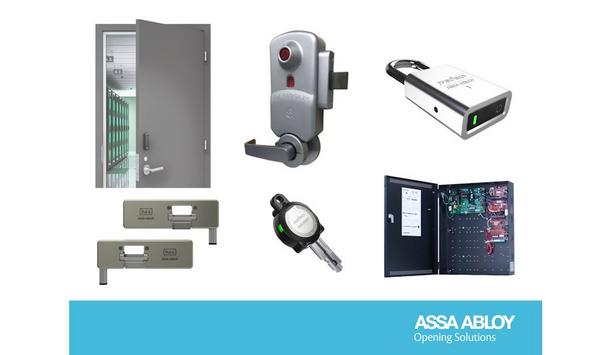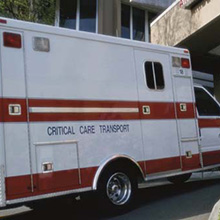 |
| American Dynamics’ CCTV systems reduce security incidents on campus by restricting access |
In many ways, Newton-Wellesley Hospital in Newton, Mass., couldn’t ask for a better location. Close to major roads and public transportation, the hospital is convenient for incoming patients, staff and visitors. But accessibility ceases to become an advantage if visitors who enter the campus are up to no good. To prevent trouble, the hospital depends on a new sophisticated security system that integrates access control and video surveillance.
Before 2002, the hospital relied on a lock-and-key system to secure all entrances. Now, exterior and interior doors are linked to an access control system in the main security office. More than 100 proximity card readers ensure that no one enters protected areas who shouldn’t be there. Forty high-speed CCTV dome cameras, recorded by three digital video recorders, keep around-the-clock watch over main entrances, exterior parking lots and interior areas. Cameras are monitored from the security office and are available by remote access from other locations.
The systems have reduced security incidents on campus by restricting access, strengthening the hospital’s emergency-response capabilities, and bringing the hospital into full compliance with the security requirements of the Health Insurance Portability and Accountability Act (HIPAA) and the Joint Commission for Accreditation of Healthcare Organizations (JCAHO).
Three factors were central to the project’s success: close collaboration between Newton-Wellesley’s security department and Surveillance Specialties Ltd. of North Andover, Mass., the hospital’s security systems integrators; a phased implementation strategy; and clear, consistent communication with hospital staff.
Too Many Keys
Newton-Wellesley is a six-floor community teaching hospital with 233 patient beds. The hospital employs more than 1,400 people, and another 450 doctors have privileges. A steady stream of visitors, volunteers, residents and vendors boost the daily number of people on campus into the thousands.
Employees, physicians, volunteers, students and contractors have always been required to wear photo Ids, but in the days before access control, they were forever “forgetting” their badges. The hospital had a video surveillance system, but black-and-white tube cameras and analog VCRs made it difficult to accomplish the desired coverage. With no system in place for validating identification or monitoring the status of doors, it was hard to know who had legitimate access to areas and who didn’t; whether a door was open that shouldn’t be open; and where and how a space was breached.
Then, there were the keys. Every morning, a security officer had to manually unlock all of the exterior doors; and every evening, another officer had to lock them back up. With dozens of doors and numerous master keys to deal with, securing the exterior took anywhere from 30 minutes to an hour, depending on how well the locks were functioning or the number of security requests that interrupted the process. Had there been an emergency requiring all exterior doors to be sealed off, precious time would have been lost dealing with locks and keys.
The Plan is Sold
In 2000, a risk analysis of the hospital’s facilities identified where and how the institution was vulnerable to intrusion. A second evaluation by an independent consultant corroborated the findings. Improvements were clearly needed.
“The C•CURE system best met the institution’s needs for scalability and integration with CCTV systems and other security applications" |
The security department had tried but failed to get funding for new security systems many times. Although a new executive management team was in favor of upgrading security, the hospital had a limited capital budget. To improve the chances of getting funding, the security director prepared a request to put access control on those doors that needed it most: the exterior doors, to protect people and assets and enable immediate lockdown, if necessary; the maternal and child health floors, high-risk areas for any hospital; the medical records area, for HIPAA compliance; and the medical library, to safeguard costly research materials. Thankfully, Newton-Wellesley had never fallen victim to infant abduction, but since many other hospitals had, funding was requested for CCTV equipment and an infant tracking system.
Because access control would be a major cultural change for the hospital, the security director met with key department heads and explained the value of an electronic system. The proposal was approved for funding in April 2002.
A Stage-By-Stage Strategy
“The C•CURE system best met the institution’s needs for scalability and integration with CCTV systems and other security applications.” Surveillance Specialties won the project after submitting detailed analysis of how access control could be implemented given the hospital’s layout, door mechanics and wiring. National and city fire codes, as well as the institution’s strict engineering standards, were also taken into account in the planning.
The C•CURE® 800 access control system and proximity card readers from Software House were chosen for the installation. The system best met the institution’s needs for scalability and integration with American Dynamics’ CCTV systems and other security applications.
“Initial resistance to access control has given way to full acceptance” |
Surveillance Specialties technicians had to install access panels, door contacts, card readers, request to-exit motion detectors, motion sensors and other equipment. Using detailed CAD site drawings, the project team pinpointed where devices would go.
Next, the project was broken into segments. Technicians started with two employee entrances to give the hospital staff time to become familiar with the card readers before other doors were added to the system. Technicians then moved on to the rest of the exterior, including the surgical center, the emergency department, the main visitors’ entrance, the three medical office buildings and side doors. To minimize disruptions to hospital operations and achieve security goals more quickly, the exterior doors were done in small groups and activated once they were finished. Medical records and the library would come next because they were small and could be done quickly, followed by maternity and pediatrics.
Winning Employees Over
New access cards had to be designed, coded, printed and distributed by the time the doors were ready for activation. The security department had a database with the personnel information needed for the cards in its computer system. After the data was reconciled, Surveillance Specialties imported the information into the C•CURE system.
Approximately 2,500 cards were initially printed, and cards were distributed six weeks before the system went live in October 2002.
During this time, the security department launched an education campaign. Staff and physicians had been coming and going more or less freely for years; now they would need to have their access cards to pass through protected areas. Employees worried that the hospital did not trust them. Supervisors worried that the technicians’ work would interfere with people’s jobs. Using a variety of tactics, including the facility wide emails, open houses, and meetings, the security department helped ease employee concerns.
All cardholders received an instructional memo on how to use the readers, and security officers were at the door the day the entrances went live in case anyone had questions or problems.
Switching Gears is Not a Problem
In August 2002, technicians began to install wire on the remaining exterior doors and routing cable. Like many hospitals, Newton-Wellesley is made up of multiple buildings and wings, so cable could not always be run in a direct line. In some locations, technicians ran fiber underground, either to solve distance problems or to provide for future system expansion.
The team had to go through virtually every section of the hospital to do all the wiring. Each morning, the senior technician checked in with his designated contact to make sure that work could proceed. If patient volume was particularly high or if creating dust or noise was a problem, the technicians moved to another area and returned at a better time. This way, there were no surprises or turf wars.
Once the activation date for each door group was known, this information was communicated first to the appropriate department head or nursing supervisor, and then to the entire facility via email.
Maternity and Beyond
After the exterior doors, medical records, and library were completed, the technicians moved on to the final part of Phase I, the maternal and child health floors. Card readers were installed on the two floors and public elevator access restricted. In case of emergency, a valid card read initiates a priority override function that supersedes all other elevator requests, so that nurses can get to their desired floor immediately.
In addition to the card readers, technicians installed 18 CCTV cameras recorded by Intellex® digital video management systems from San Diego-based American Dynamics. The cameras and recorders are integrated with the access control system, as is the Hugs infant protection system supplied by Xmark (a division of Instantel).
“Initial resistance to access control has given way to full acceptance.”
Phase I of the project was completed in December 2002. A second capital budget request to expand electronic security was approved in early 2003. In Phase II, the pharmacy, materials management area, health information systems area, psychiatric ward and a section of radiology were integrated with access control, and nearly two dozen CCTV cameras monitoring the exterior were replaced with Sony high-resolution color cameras. The security department will soon be preparing a 2004 capital budget request for continued system expansion.
Initial resistance to access control has given way to full acceptance. The security department has received requests for card access for many locked rooms in the hospital — many of which do not even need it.
Now, if an emergency should occur, locking down the facility would only be a matter of “telling” the computer. Security officers no longer have to make the rounds on a time schedule with their ring of keys; the electronic system guarantees that all exterior doors automatically lock on schedule, simply by pressing a few keys.










